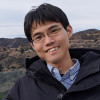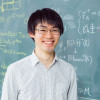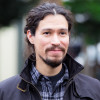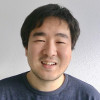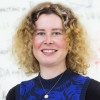Featured News
RIKEN Center for Interdisciplinary Theoretical and Mathematical Sciences (iTHEMS) is an international research center at RIKEN. It facilitates close collaborations among researchers from different disciplines in theoretical, mathematical and computational sciences. On April 1, 2025, iTHEMS transitioned from a program to a center. The ultimate goal of iTHEMS is to unravel the mystery of the Universe, matter, and life, as well as to solve key problems in modern society through interdisciplinary approaches.
Upcoming Events
-
Others In Session
Visit by ASCENT-6E high school students (2026)
January 12 (Mon) 10:40 - 16:00, 2026
-
Seminar Tomorrow
LEVERAGING EARTH OBSERVATIONS WITH MACHINE-LEARNING APPROACHES FOR WATER CYCLE MONITORING
January 13 (Tue) 10:30 - 12:00, 2026
Victor Pellet (Professor, Laboratoire de Météorologie dynamique (LMD-X), Ecole Polytechnique, France)
-
 Colloquium Tomorrow
Colloquium TomorrowMeasuring evolutionary forces of cultural change
January 13 (Tue) 14:00 - 15:30, 2026
Joshua B. Plotkin (Walter H. and Leonore C. Annenberg Professor of the Natural Sciences, University of Pennsylvania, USA)
-
Seminar
Classical Spinning Black Hole Scattering from Quantum Amplitudes
January 15 (Thu) 14:00 - 15:30, 2026
Dogan Akpinar (Ph.D. Student, Higgs Centre for Theoretical Physics, School of Physics and Astronomy, University of Edinburgh, UK)
-
Seminar
A one-world interpretation of quantum mechanics
January 16 (Fri) 14:00 - 16:00, 2026
Isaac Layton (Postdoctoral Researcher, Department of Physics, Graduate School of Science, The University of Tokyo)
-
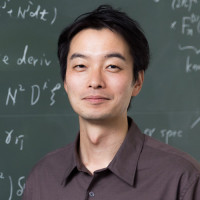 Seminar
SeminarIntroduction to the gravitational wave background from the primordial universe
January 16 (Fri) 16:00 - 17:15, 2026
Ryo Namba (Senior Research Scientist, Division of Fundamental Mathematical Science, RIKEN Center for Interdisciplinary Theoretical and Mathematical Sciences (iTHEMS))
-
Seminar
Evolution of sterile soldier castes in aphids
January 21 (Wed) 13:00 - 14:00, 2026
Keigo Uematsu (Assistant Professor, Keio University)
-
School
New computational methods in quantum field theory 2026
January 26 (Mon) - 28 (Wed) 2026
-
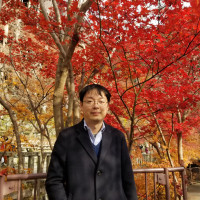 Seminar
SeminarDEEP-IN-iPI Joint Meeting
January 26 (Mon) - 30 (Fri) 2026
Xingyu Guo (Lecturer, Institute of Quantum Matter, South China Normal University, China)
Gert Aarts (Professor, Department of Physics, Swansea University, UK)
Shuzhe Shi (Assistant Professor, Physics Department, Tsinghua University, Beijing, China)
Sung Hak Lim (Senior Researcher, Center for Theoretical Physics of the Universe (CTPU-PTC), Institute for Basic Science (IBS), Republic of Korea)
Jinyang Li (Ph.D. Student, Program of Particle and Nuclear Physics, The Graduate University for Advanced Studies (SOKENDAI)) -
Workshop
iTHEMS Cosmology Forum n°5 - Effective Field Theory approaches across the Universe
January 29 (Thu) 10:00 - 17:00, 2026
Katsuki Aoki (Research Assistant Professor, Yukawa Institute for Theoretical Physics, Kyoto University)
Toshifumi Noumi (Associate Professor, Graduate School of Arts and Sciences, The University of Tokyo)
Lucas Pinol (CNRS Researcher, LPENS, CNRS/École Normale Supérieure, France) -
Seminar
Gauge fixing for open systems: A pathway to open gravity EFTs
January 30 (Fri) 14:00 - 16:00, 2026
Maria Mylova (Project Researcher, Kavli Institute for the Physics and Mathematics of the Universe (Kavli IPMU))
-
 Others
OthersMathematical Application Research Team Meeting #12
February 6 (Fri) 14:00 - 15:30, 2026
Riccardo Muolo (Special Postdoctoral Researcher, Division of Fundamental Mathematical Science, RIKEN Center for Interdisciplinary Theoretical and Mathematical Sciences (iTHEMS))
-
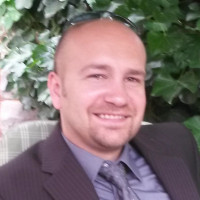 Seminar
SeminarWhat can we learn from kilonovae about nucleosynthesis and high-density matter?
February 9 (Mon) 14:00 - 15:15, 2026
Oliver Just (Postdoctoral Researcher, GSI Helmholtzzentrum für Schwerionenforschung, Germany)
-
Colloquium
The 31th MACS Colloquium & 2025 MACS Achievement Report Meeting
February 18 (Wed) 14:45 - 18:00, 2026
Yujiro Eto (Associate Professor, Center for Science Adventure and Collaborative Research Advancement (SACRA), Graduate School of Science, Kyoto University)
-
Seminar
Lie Algebraic Saddles of the IKKT Matrix Model
February 24 (Tue) 14:00 - 16:00, 2026
Henry Liao (Ph.D. Student, Department of Physics, National Taiwan University, Taiwan)
-
Seminar
Testing the quantum nature of gravity with optomechanical systems
February 26 (Thu) 10:00 - 12:00, 2026
Yuta Michimura (Assistant Professor, Department of Physics, Graduate School of Science, The University of Tokyo)
-
Workshop
RIKEN iTHEMS-Kyoto University joint workshop on Asymptotics in Astrophysics and Cosmology
March 2 (Mon) - 4 (Wed) 2026
-
Workshop
KEK-iTHEMS Workshop “Concepts of Quantum and Spacetime”
March 9 (Mon) - 12 (Thu) 2026
-
Workshop
Perspectives and applications of Koopman Operator Theory
March 19 (Thu) 9:00 - 18:00, 2026
Yoshihiko Susuki (Professor, Graduate School of Engineering, Kyoto University)
Hiroya Nakao (Professor, Department of Systems and Control Engineering, Institute of Science Tokyo)
Alexandre Mauroy (Associate Professor, Mathematics, University of Namur, Belgium)
Yuzuru Kato (Associate Professor, Department of Complex and Intelligent Systems, School of Systems Information Science, Future University-Hakodate) -
Seminar
Clumpy Outflows from Super-Eddington Accreting Black Holes
April 10 (Fri) 14:00 - 15:15, 2026
Haojie Hu (JSPS Research Fellow, University of Tsukuba)
Opportunities
-
Seeking a few of Research Scientists or Postdoctoral Researchers (25-1477)
Deadline: Open until filled
Research Scientists or Postdoctoral Researchers, a few positions. The AI for Science Team is seeking researchers who, through fundamental research in AI centered on deep learning, will pioneer advanced AI technologies and explore new applications in the natural sciences.
-
Seeking a Research Scientist or a Postdoctoral researcher (25-1440)
Deadline: Open until filled
Research Scientist or Postdoctoral Researcher : One position. The Prediction Science Research Team is seeking one Research Scientist or Postdoctoral Researcher to engage in research focused on developing a rapid prediction and control system for disaster prevention of heavy rainfall and urban flooding, based on big data assimilation techniques and integrating precipitation nowcasting, deep learning, and numerical weather prediction.
-
Seeking a few Postdoctoral Researchers, Research Scientists or Senior Research Scientists (25-1262)
Deadline: Open until filled
Seeking a few Postdoctoral Researchers, Research Scientists or Senior Research Scientists to conduct research in the Quantum Mathematical Science Team, in collaboration (and, if necessary, jointly appointed) with cooperating laboratories.
-
Seeking a Research Scientist, a Postdoctoral researcher or a Research Associate (25-1114)
Deadline: Open until filled
Research Scientist, Postdoctoral Researcher or Research Associate: one position. The Prediction Science Research Team, iTHEMS is seeking a Research Scientist, Postdoctoral Researcher, or Research Associate to engage in research on the mathematical foundations of a new “Science of Prediction,” integrating Simulation Science and Data Science to address large-scale, complex prediction and control challenges.
Latest News
-
2026-01-08
Hot Topic
RIKEN–IBS Joint Workshop on Mathematical Approaches to Nature Held in Daejeon, Korea, December 9–12, 2025
In December 9–12, 2025, a collaborative workshop jointly organized by the Institute of Basic Science (IBS, Korea) and RIKEN was held in Daejeon, Korea. The workshop aimed to explore the unifying mathematical principles that underlie diverse natural phenomena—from the fundamental interactions that shape the universe to the complex behaviors observed in living systems. From RIKEN, iTHEMS researchers including Derek Inman, Ryo Namba, Alvaro Pastor Gutierrez, Shuntaro Aoki, Sungsik Kong, Amaury Micheli, Puttarak Jai-akson, Ryoko Oishi-Tomiyasu, Che-Yu Chen, and Christy Kelly delivered talks. All the presentations were impressive and thoughtfully prepared so that researchers from different fields could follow and appreciate the content. Indeed, there were many stimulating cross-disciplinary questions, and we enjoyed lively discussions over lunches and dinners, accompanied by excellent (and wonderfully spicy) food. Although the workshop was originally designed to foster collaboration between RIKEN and IBS, connections were already present—for example, through Shuntaro Aoki, a physicist at iTHEMS formerly at IBS, and Shingo Gibo, a mathematical biologist at IBS formerly at iTHEMS. This workshop further strengthened these ties and created new ones. The planning and local organization of the workshop were led by the center of Masahide Yamaguchi (IBS), Yusuke Yamada (IBS), and by Yuto Yamamoto and Ryo Namba at RIKEN iTHEMS, with strong support from IBS and the International Collaboration Section of the Global Strategy Division at RIKEN. We are deeply grateful for their dedicated efforts. I hope that the successful interactions fostered through this workshop will continue to develop even further. (Photos: courtesy of Director Satoshi Iso, RIKEN iTHEMS.) Reported by Gen Kurosawa
-
2026-01-08
Paper of the WeekWeek 2, January 2026
Title: Phases of the $q$-deformed $\mathrm{SU}(N)$ Yang-Mills theory at large $N$ Author: Tomoya Hayata, Yoshimasa Hidaka, Hiromasa Watanabe arXiv: http://arxiv.org/abs/2601.03843v1 Title: Revisiting Spherically Symmetric Spacetime I: Geometro-Hydrodynamics Author: Puttarak Jai-akson, Yuki Yokokura arXiv: http://arxiv.org/abs/2601.03077v1 Title: Exceptional Lines and Excitation of (Nearly) Double-Pole Quasinormal Modes: A Semi-Analytic Study in the Nariai Black Hole Author: Nao Nakamoto, Naritaka Oshita arXiv: http://arxiv.org/abs/2601.00704v1 Title: Gauge Symmetry in Quantum Simulation Author: Masanori Hanada, Shunji Matsuura, Andreas Schafer, Jinzhao Sun arXiv: http://arxiv.org/abs/2512.22932v1
-
2026-01-08
Seminar Report
GW-EOS WG Seminar by Pierbiagio Pieri on November 6, 2025
In this seminar, pairing phenomena in three kinds of quantum many-body systems were discussed. First, the speaker reviewed his work on the Bose-Fermi mixture, mainly focusing on the quasiparticles called Fermi-polarons. Second, inhomogeneous pairing fluctuations in a spin-polarized Fermi-Fermi mixture are reviewed. Finally, dissipations called mutual friction arising from interplay between Andreev bound states in the vortex core and delocalized thermal excitations were discussed for strongly interacting Fermi superfluids. Reported by Yuta Sekino
Upcoming Visitors
-

Visiting
Fu-Peng Li
Postdoc, Fudan University, ChinaTerm: January 5 (Mon) - February 4 (Wed) 2026Visiting Place: Main Research Building, RIKEN Wako Campus -
Max Hill
Assistant Professor, University of Hawaiʻi, USATerm: February 19 (Thu) - 21 (Sat) 2026Visiting Place: Main Research Building, RIKEN Wako Campus

